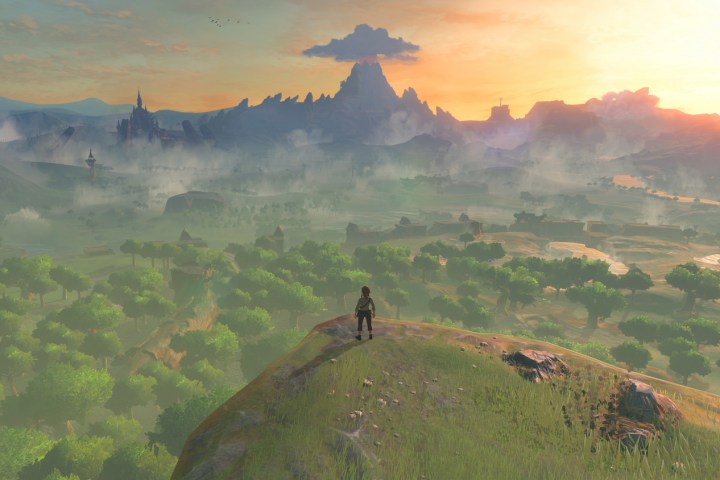
But it doesn’t have to be that way. While it is important to make sure gamers can find out what to do and where to go at any given moment, those mechanics increasingly come at the expense of discovery, diluting some of the greatest joys to be found in exploring virtual worlds.
Fortunately, in the last few months, we’ve seen a wave of games experimenting with ways to look past the clutter of in-game UI, using everything from photo-modes to minimalist maps, to put their games worlds’ in the spotlight.
Less really can be more
If you sift through the mountains of critical praise for The Legend of Zelda: Breath of the Wild, you’ll find a common thread among its reviews; the game lets the player discover the mysteries of its world themselves. With on-screen indicators and player information displayed in muted colors, the gameplay experience is very much grounded in the world around you.

When combined with its expansive, distraction-free map, and a lack of concrete information about the setting, you’re left to discover Hyrule’s mysteries for yourself. Not sure what to do? Pick a landmark in the distance, and go there. You’re sure to find something interesting and worth your time, even if it isn’t exactly what you planned to be doing and chances are you’ll have quite the adventure along the way.
Resident Evil 7 takes a similarly minimalist approach, though in this case the lack of information is used to frighten, rather than inspire. Exploring the Baker household is left up to the players themselves and when it comes to the game’s many boss enemies, you don’t see a single health bar or location indicator. Would it be more scary if they had a slowly diminishing red bar above their head? It seems hard to imagine.
The old adage that “the journey is more important than the destination” is as true in gaming as it is in the real world. Pushing players to make their own way, without giving them tools that explain exactly where to go and how to get there, makes room for organic, emergent gameplay moments. These moments; The feeling of satisfaction when you point to a mountain in Breath of the Wild, then find and climb it; That adrenaline-fueled dash to safety in the Baker house; these are the kinds of experiences that so many players look for from video games, but so few games actually provide: The experience of escaping to somewhere new.
Say Cheese
Even when the HUD isn’t as stripped-back as it could be, a number of games are now letting us experience them as if that were the case. Photo modes, ostensibly there to let us snap the coolest moments in our games, often allow for a more natural window into the game worlds they’re designed to capture.
It may be that giving players the choice offers the best of both worlds
Final Fantasy XV‘s take on it was unique, letting players and an NPC character take pictures of some of the most exciting moments of the game. When you look back at those moments through these images, they come free of UI elements like HP and damage numbers.
Uncharted 4: A Thief’s End does much the same, letting players capture some beautiful shots of its picturesque locales. It even inspired a real-world photo community forming around taking cool photos in the game, and contests to see who could snap the best moment from the story.
Photo features allow players who like to see damage numbers and minimap icons have the snapshot memories of their time with the game, without all the extraneous details. They can revel in the sheer joy of the game’s mechanics and still look at the gorgeous world.
Giving players the choice
Lots of games, including Uncharted 4 and Final Fantasy XV, let you experiment with removing parts of the HUD for a more UI-free experience. Some of these options are simple and purely technical: The Division lets you turn off the radar, and Horizon: Zero Dawn gives you the ability to deactivate a number of HUD options.

Some games have used the feature to introduce practical, gameplay elements: Square Enix’ Nier: Automata allows players to remove many of its individual HUD elements in exchange for skill points. The game uses a system for choosing skills and passive bonuses called “system chips.” HUD elements, including your minimap, quest list, experience, and other seemingly critical indicators.
While many of these more “realistic” modes do present new challenges, many of them seem to be aesthetically focused. For some of us, it’s easier to lose yourself in a less cluttered game. The fights feel more real. The danger is more present and unpredictable.
While games like Breath of the Wild, built from the ground up to be deliberately vague and unclear, are a great example of restricted communication, giving players the choice may offer the best of both worlds. Letting players choose whether to take a helping hand, rather than having it forced upon them might appeal to the largest audience, which caters to more immersive gamers and those with less time on their hands. When in doubt, it’s always better to give gamers a choice.



